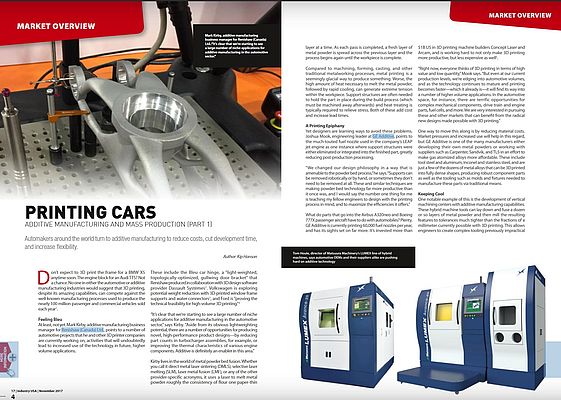Automakers around the world turn to additive manufacturing to reduce costs, cut development time and increase flexibility.
Compared to machining, forming, casting, and other traditional metalworking processes, metal printing is a seemingly glacial way to produce something. Worse, the high amount of heat necessary to melt the metal powder, followed by rapid cooling, can generate extreme tension within the workpiece. Support structures are often needed to hold the part in place during the build process (which must be machined away afterwards) and heat treating is typically required to relieve stress. Both of these add cost and increase lead times.

























































